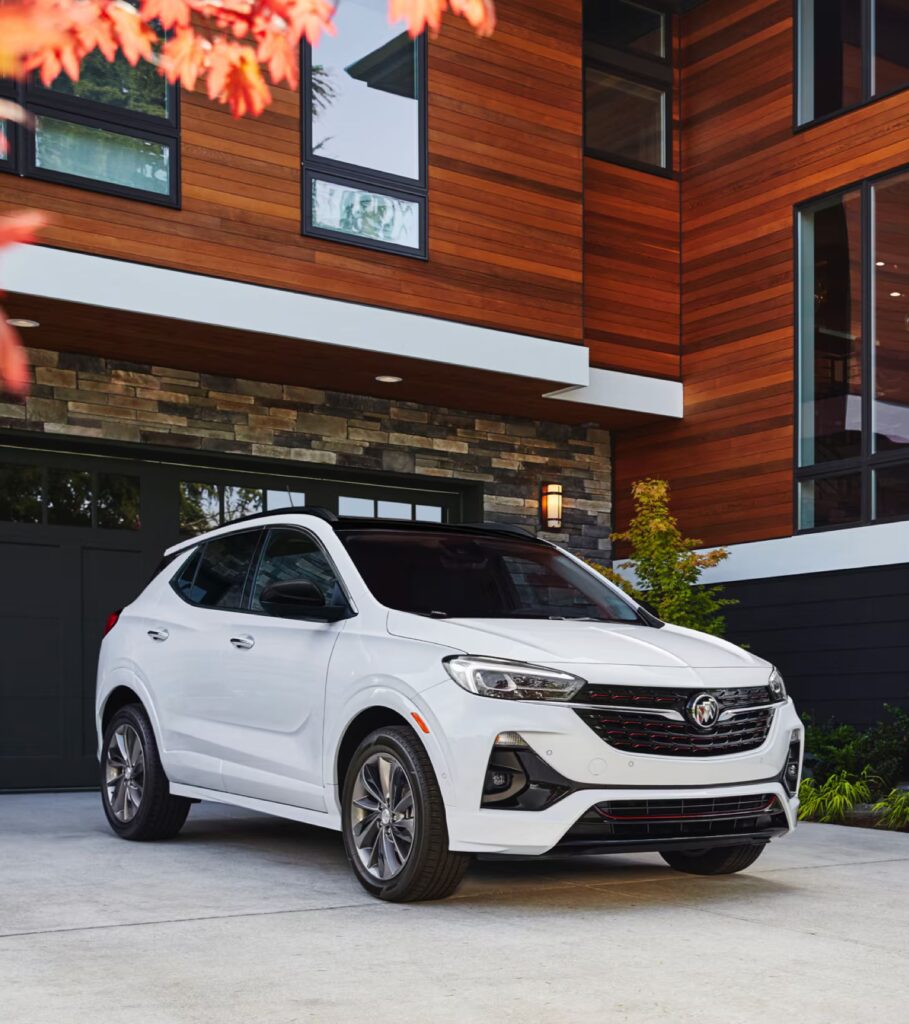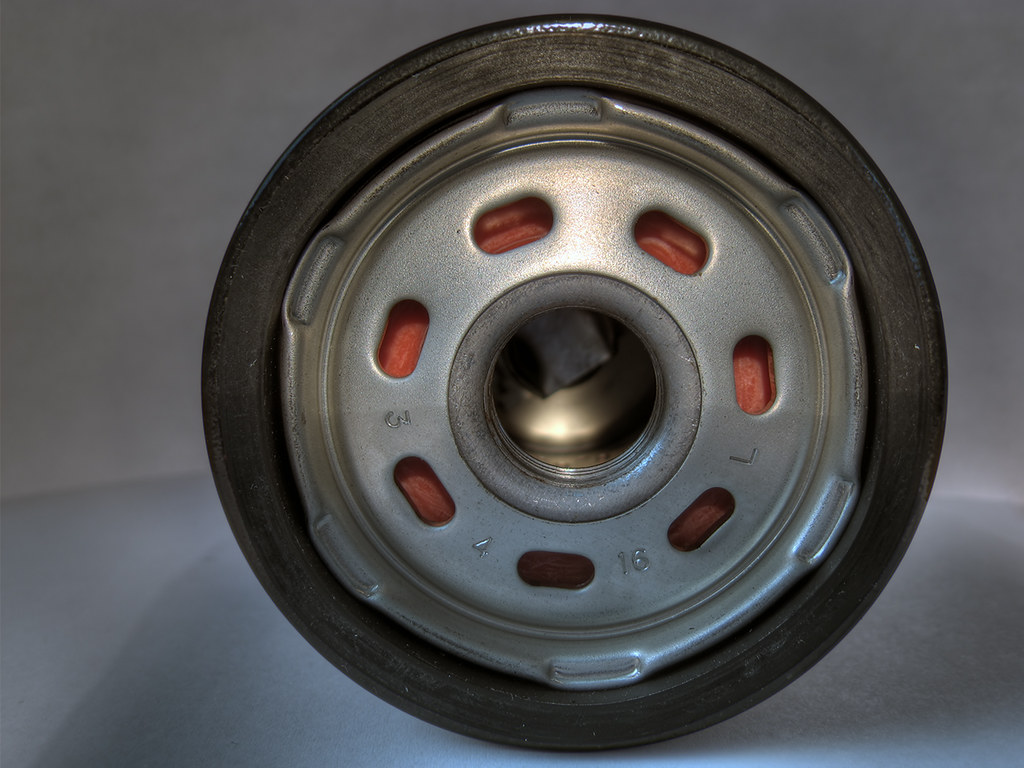
When it comes to purchasing a vehicle, the excitement can be palpable. The prospect of a new car, whether fresh off the lot or a reliable used model, often fills drivers with anticipation for smooth journeys and dependable performance. However, the reality can sometimes diverge sharply from these expectations, leading to a frustrating and costly case of buyer’s remorse. Understanding that not all vehicles live up to their initial promise is crucial for any discerning car buyer.
In today’s automotive market, where both new and used car prices demand significant investment, making an informed decision is more important than ever. Relying solely on a vehicle’s exterior aesthetics or advertised specifications can be a recipe for disappointment. Smart consumers recognize the value in learning from the experiences of others, particularly those who have navigated the pitfalls of an unfortunate purchase. This knowledge empowers prospective buyers to make choices that truly align with their needs and budget, avoiding the financial and emotional burden of a problematic vehicle.
This in-depth guide is designed to highlight some of the most frequently regretted vehicle purchases, drawing directly from owner feedback and documented issues. We’ll explore specific models that, despite initial appeal, have consistently failed to meet expectations, leaving drivers wishing they had never signed on the dotted line. By examining the common problems associated with these vehicles, we aim to provide you with the practical, consumer-centric insights needed to make your next car-buying journey a smart, informed, and ultimately, regret-free experience.

1. **Chevrolet Bolt** The Chevrolet Bolt has often been praised for its affordability and a respectable electric range, making it an attractive option for those venturing into the EV market. However, behind this initial appeal lies a history plagued with significant issues, most notably concerning its battery system. These problems have unfortunately tarnished its reputation, causing considerable concern among owners and prospective buyers alike.
The most infamous of these issues revolves around battery-related fires, which led to extensive recalls in both 2020 and 2021. The root cause was traced to lithium-ion batteries manufactured by LG, which had the potential to short-circuit, overheat, and even ignite into flames. Such a critical safety concern not only jeopardizes occupant safety but also undermines the fundamental trust a driver places in their vehicle.
Beyond the dire battery problems, the Chevrolet Bolt has also received lukewarm reviews for other aspects of its driving experience. Many owners have pointed out that the ride quality is merely ‘so-so,’ failing to deliver the comfort and refinement often sought in a modern vehicle. Similarly, the space allocated for rear passengers has been described as adequate at best, often feeling cramped on longer journeys, while its handling characteristics don’t particularly stand out.
Furthermore, the Bolt’s modest range of 259 miles per charge, while respectable for certain uses, ultimately limits its practicality for extensive road trips, often confining its optimal use to city driving. Its aesthetic appeal remains subjective, and these combined factors, especially the significant reliability concerns, led to its removal from Consumer Reports’ recommendation list. For a brand like Chevrolet, still actively establishing its footing in the competitive EV segment, such issues highlight the importance of opting for more proven alternatives.
Car Model Information: 2019 Chevrolet Bolt EV LT
Name: Chevrolet Bolt EV
Caption: 2022 Chevrolet Bolt EV
Manufacturer: General Motors
Production: unbulleted list
ModelYears: unbulleted list
Class: Subcompact car
BodyStyle: hatchback
Layout: Front-engine, front-wheel-drive layout
Predecessor: Chevrolet Spark EV
Categories: 2020s cars, All Wikipedia articles in need of updating, All articles containing potentially dated statements, All articles with unsourced statements, Articles containing potentially dated statements from February 2018
Summary: The Chevrolet Bolt EV (marketed in Europe as Opel Ampera-e) is a battery electric subcompact hatchback manufactured and marketed by General Motors under its Chevrolet brand from late 2016 until late 2023, with a brief hiatus between mid-2021 and early 2022.
The first-generation Bolt was developed and manufactured with LG Corporation. Sales of the 2017 Bolt began in California in December 2016; it was released nationwide and international markets release in 2017. A rebadged European variant was marketed as the Opel Ampera-e in mainland Europe. In 2017, the Bolt was the second-best-selling plug-in car in the United States. It was named the 2017 Motor Trend Car of the Year, the 2017 North American Car of the Year, an Automobile magazine 2017 All Star, and was listed in Time magazine’s Best 25 Inventions of 2016. The Ampera-e was discontinued after 2018. By the end of 2020, GM had sold 112,000 Bolt and Ampera-e cars worldwide. The first-generation Bolt had been subject to at least three recalls due to battery fire risks.
In mid-2023, GM officials said they would discontinue the Bolt; after outcry, they announced plans for a next-generation model, which is expected to be revealed in 2025 for model year 2026.
Get more information about: Chevrolet Bolt
Buying a high-performing used car >>>
Brand: Chevrolet Model: Bolt
Price: $12,999 Mileage: 64,980 mi.
Read more about: Rev Up Your Engines! These 14 Stars Boast Jaw-Dropping, Priceless Classic Car Collections
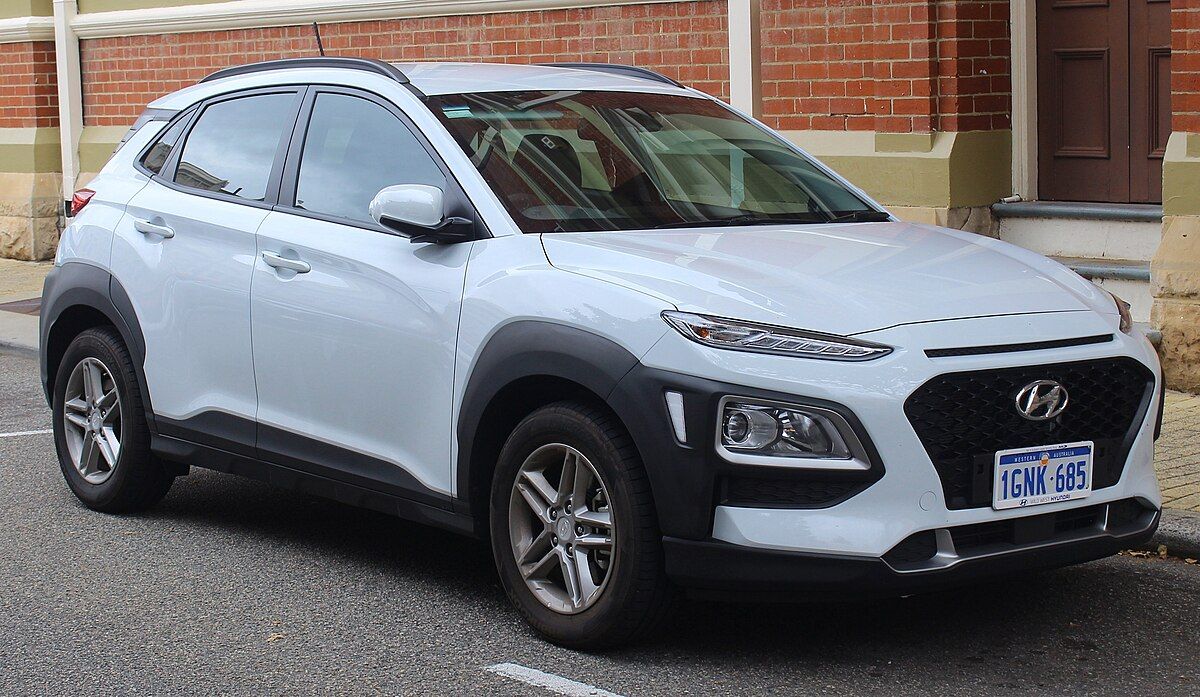
2. **Hyundai Kona Electric** Hyundai has certainly made significant strides in the electric vehicle market, rolling out several models that have been met with widespread acclaim and positive reception. Yet, even successful manufacturers can have their missteps, and in the realm of electric vehicles, the Hyundai Kona Electric stands out as a notable ‘clunker’ that has caused its share of owner dissatisfaction and concern.
Much like the Chevrolet Bolt, the Hyundai Kona Electric has a troubled history marked by battery fires and subsequent recalls. These incidents prompted the carmaker to issue a worldwide recall in both 2020 and 2021, aiming to proactively address and mitigate the fire risks by replacing battery packs in affected vehicles. This proactive measure, while necessary for safety, nonetheless signals a fundamental flaw that can severely undermine consumer confidence in the vehicle’s long-term reliability.
The battery issues, however, are often seen as merely ‘the tip of the iceberg’ when it comes to the Kona Electric. While specific additional problems are not detailed, this phrase from the context strongly implies a broader range of underlying reliability concerns that extend beyond the power source. It suggests that owners may encounter other unforeseen mechanical or electrical issues, turning what was hoped to be an eco-friendly purchase into a source of ongoing frustration.
The overarching message regarding the Hyundai Kona Electric is a stern ‘buyer beware!’ This cautionary note underscores the importance of thorough research before committing to this particular model. Despite Hyundai’s broader success in the EV space, the Kona Electric serves as a reminder that not every innovation or offering from a reputable brand will deliver the seamless and worry-free ownership experience that consumers rightfully expect.
Car Model Information: 2023 Nissan Rogue SL
Name: Hyundai Kona
Caption: Hyundai Kona N Line (SX2)
Manufacturer: Hyundai Motor Company
Aka: Hyundai Kauai (Portugal)
Production: 2017–present
ModelYears: 2018–present
Class: Subcompact crossover SUV
BodyStyle: SUV
Layout: ubl
Categories: 2020s cars, All-wheel-drive vehicles, All Wikipedia articles in need of updating, Articles containing Chinese-language text, Articles containing Korean-language text
Summary: The Hyundai Kona (Korean: 현대 코나) is a subcompact crossover SUV produced by the South Korean manufacturer Hyundai. The first-generation Kona debuted in June 2017 and the production version was revealed later that year. It is positioned between the Venue or Bayon and the Tucson in Hyundai crossover SUV line-up. The battery electric version called the Kona Electric (or Kona EV) was first launched in South Korea during the first half of 2018 and rolled out gradually worldwide afterwards.
Get more information about: Hyundai Kona
Buying a high-performing used car >>>
Brand: Hyundai Model: Kona Electric
Price: $22,800 Mileage: 50,186 mi.
Read more about: Avoid These 14 Compact SUVs: Your Guide to Steering Clear of Money Pits After 90,000 Miles
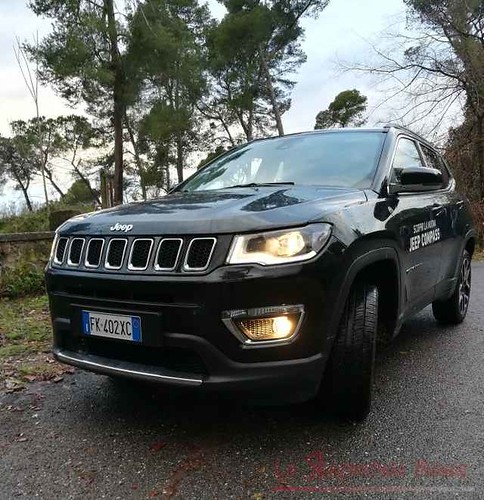
3. **Jeep Compass** The Jeep Compass, a compact SUV, might present an appealing option for those seeking the rugged image associated with the Jeep brand in a more urban-friendly package. However, its various model years have been plagued by a series of ‘serious issues’ that have led many owners to regret their purchase. These persistent problems can transform the dream of owning a versatile SUV into a veritable ‘migraine headache on wheels.’
One of the most frequently cited and aggravating issues by owners centers on the vehicle’s transmissions. Both the continuously variable transmission (CVT) and the 9-speed automatic transmissions are common sources of complaint. Drivers report experiencing ‘herky-jerky shifting,’ an unpleasant sensation that detracts significantly from the driving experience and suggests underlying mechanical stress. In more severe cases, these transmissions can even suffer ‘catastrophic failure,’ leading to costly repairs and significant downtime for the vehicle.
Beyond the transmission woes, the Jeep Compass has also been criticized for its ‘poor engine performance.’ This can manifest as a lack of power, sluggish acceleration, or an overall uninspiring driving dynamic, which is particularly disappointing for an SUV designed to handle diverse conditions. Such performance deficits can make daily commuting or highway travel a less enjoyable and more challenging endeavor.
Further adding to the list of grievances are reports of ‘excessive oil consumption,’ an issue that not only leads to higher running costs due to frequent top-ups but can also signal deeper engine problems that might lead to premature wear or failure. Compounding these mechanical issues are ‘electrical system issues,’ which can range from minor annoyances like faulty sensors or infotainment glitches to more serious problems affecting critical vehicle functions. These combined factors solidify the Jeep Compass’s reputation as a vehicle best avoided for those seeking reliability and peace of mind.
Car Model Information: 2019 Jeep Wrangler Sport
Name: Jeep Compass
Caption: 2019 Jeep Compass
Manufacturer: Jeep
Production: 2006–present
ModelYears: 2007–present
Class: Compact crossover SUV
BodyStyle: SUV
Layout: Front-engine, front-wheel-drive layout
Chassis: Unibody
Categories: 2010s cars, 2020s cars, All-wheel-drive vehicles, All Wikipedia articles written in American English, Articles with short description
Summary: The Jeep Compass is a compact crossover SUV, introduced in 2006 for the 2007 model year. The first generation Compass and Patriot, its rebadged variant, were among Jeep’s first crossover SUVs. The second-generation Compass debuted in September 2016 in Brazil and at the Los Angeles International Auto Show in November 2016, sharing a modified platform with the Renegade. It is positioned between the smaller Renegade and the larger Cherokee globally or the Commander in South America. The third-generation Compass debuted in May 2025, built on the STLA Medium by Stellantis, shared with other PSA Groupe vehicles.
Get more information about: Jeep Compass
Buying a high-performing used car >>>
Brand: Jeep Model: Compass
Price: $19,977 Mileage: 68,026 mi.
Read more about: Steer Clear: 14 Vehicles Notorious for Early Breakdowns Before 50,000 Miles
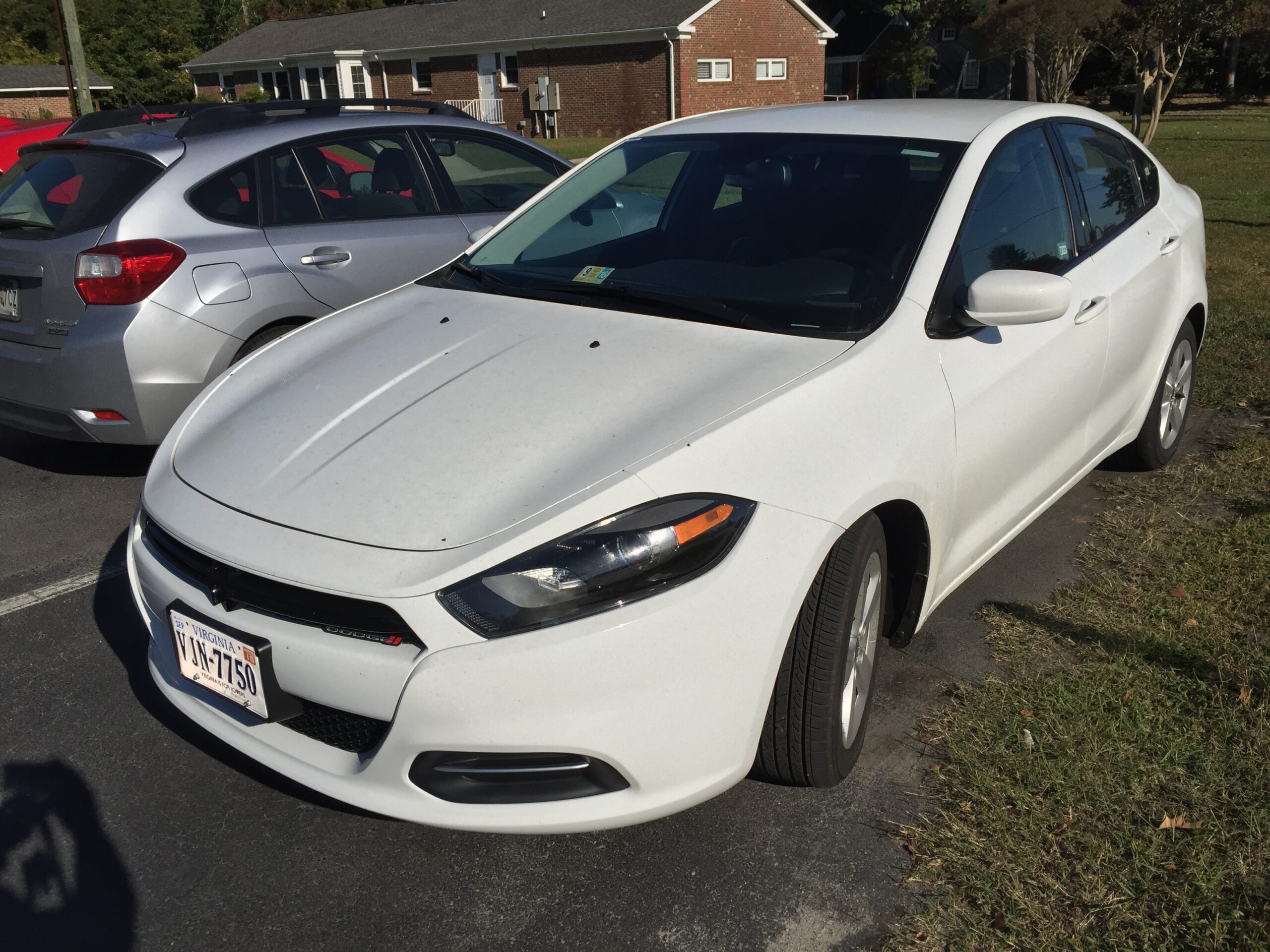
4. **Dodge Dart** The Dodge Dart, initially positioned as a compact sedan, unfortunately earned a reputation for having ‘full-size car problems,’ much to the chagrin of its owners. What started as a promising entry in the compact segment quickly became a source of widespread dissatisfaction, with issues spanning nearly every major component of the vehicle. For many, it represented a significant financial commitment that failed to deliver on basic reliability and performance.
The litany of complaints about the Dodge Dart is extensive, covering critical areas from the transmission to the engine, and extending to the suspension and brakes. Such a broad spectrum of problems indicates a vehicle with fundamental design or manufacturing shortcomings rather than isolated defects. Owners frequently reported issues that impacted the core functionality and safety of the car, leaving them with little confidence in its dependability.
Transmission troubles were a prominent feature of owner complaints, often leading to unpredictable shifting, rough operation, or even complete failure, which can be both inconvenient and expensive to remedy. Similarly, engine problems contributed to poor performance, diminished fuel economy, and unexpected breakdowns, turning daily commutes into a source of anxiety rather than ease.
Beyond the powertrain, issues with the suspension and brakes further compromised the driving experience and safety, impacting ride comfort and stopping power. These pervasive problems collectively led to a high degree of buyer’s remorse. According to Consumer Reports, a striking statistic reveals that ‘around six in 10 buyers say they are not satisfied with the vehicle,’ a clear indicator that the Dodge Dart simply did not meet the expectations of a majority of its owners, making it a car many wished they had never purchased.
Car Model Information: 2013 Dodge Dart Limited/GT
Name: Dodge Dart
Caption: 1966 Dodge Dart GT 2-door hardtop
Manufacturer: Dodge
Production: 1959–1976 (US market)
ModelYears: 1960–1976 (US market)
Class: Full-size
Layout: FR layout
Predecessor: Dodge Coronet#Fourth generation (1957–1959)
Related: Plymouth Valiant,Chrysler Valiant,Dodge Phoenix
Successor: Dodge Aspen,Dodge Diplomat,Talbot Tagora
Categories: 1970s cars, All articles with unsourced statements, Articles with short description, Articles with unsourced statements from December 2023, Articles with unsourced statements from May 2025
Summary: The Dodge Dart is a line of passenger cars produced by Dodge from the 1959 to 1976 model years in North America, with production extended to later years in various other markets.
The production Dodge Dart was introduced as a lower-priced full-size model in 1960 and 1961, but became a mid-size car for one model year for 1962, and was then reduced to a compact for two generations, from 1963 to 1976.
Chrysler had first used ‘Dart’ name plates on two Italian styled show cars, in 1956 and 1957, before it became a Dodge model name. The Dart nameplate was resurrected for a Fiat-derived compact car that was introduced in 2012.
Get more information about: Dodge Dart
Buying a high-performing used car >>>
Brand: Dodge Model: Dart
Price: $6,971 Mileage: 123,411 mi.
Read more about: Oops! Drivers Confess the 9 Cars They’d Totally “Unpurchase” If They Could Hit Rewind on the Highway
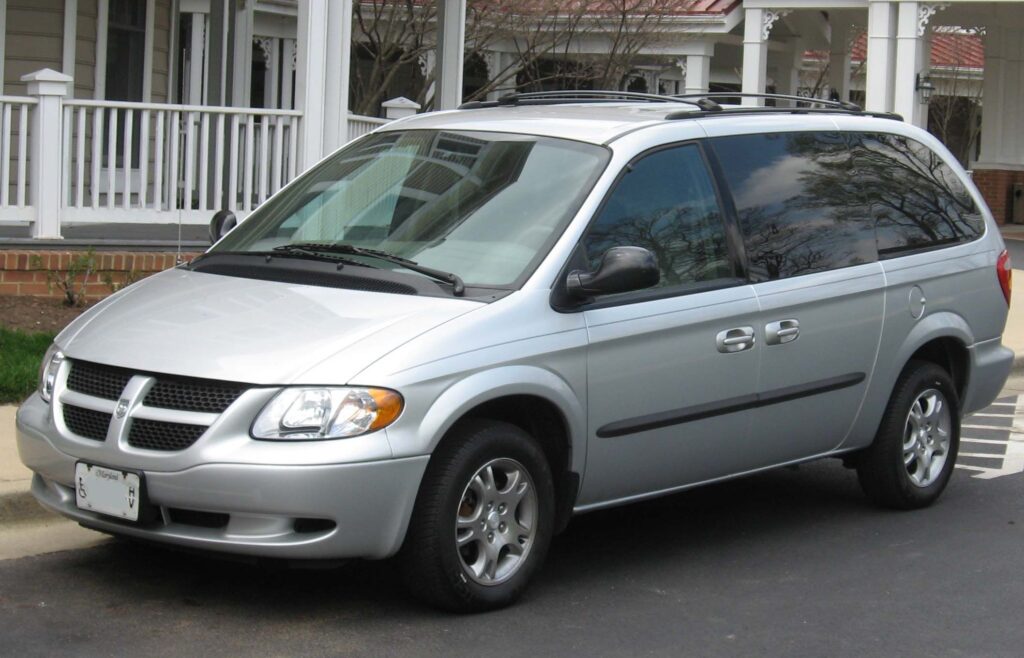
5. **Dodge Grand Caravan** For many families, the Dodge Grand Caravan holds a unique place in memory, often serving as the primary vehicle for road trips, daily commutes, and countless errands, accumulating both fond and challenging experiences. Yet, despite its role as a ubiquitous family hauler, the minivan itself was frequently described as ‘anything but smooth driving,’ a sentiment that resonates with numerous owners who encountered persistent reliability issues.
A primary concern that consistently surfaced among owners was the high incidence of ‘transmission failure.’ For a vehicle relied upon to transport family members, pets, and cargo, such a critical mechanical flaw presents a significant reliability challenge. The context makes it clear that this isn’t merely a rare occurrence, but a ‘common complaint’ that left many families stranded or facing substantial repair bills.
Even before a complete transmission breakdown, owners frequently reported a range of frustrating symptoms. These included ‘delayed gear engagement,’ where the vehicle hesitated to shift, and ‘rough shifting,’ which created an uncomfortable and jarring driving experience. ‘Slipping’ gears were also a common precursor to more serious issues, indicating a failing transmission that struggled to maintain power delivery effectively.
In addition to the pervasive transmission problems, owners also voiced numerous complaints about ‘electrical system problems.’ These can manifest as anything from minor annoyances like malfunctioning power windows or infotainment glitches to more serious issues affecting critical vehicle components. ‘Heavy oil consumption’ was another frequent grievance, leading to higher running costs and concerns about engine health. The cumulative effect of these issues led many owners to conclude that ‘if they could rewind time and have a do-over, they would gladly choose something else.’
Car Model Information: 2024 Chevrolet Silverado 1500 RST
Caption: 2011 Dodge Grand Caravan Mainstreet
Name: Dodge Grand Caravan
Manufacturer: Chrysler Corporation,Daimler AG,Chrysler LLC,Chrysler Group LLC,FCA US LLC
Class: Minivan
Layout: FF layout,F4 layout
Production: November 2, 1983 –August 21, 2020
ModelYears: 1984–2020
Related: Plymouth Voyager,Chrysler Town & Country (minivan),Dodge Mini Ram,Chrysler Voyager,Volkswagen Routan
Assembly: Windsor, Ontario,Fenton, Missouri,Fenton, Missouri,Fuzhou
Successor: Dodge Journey,Chrysler Voyager
Categories: All-wheel-drive vehicles, All articles with unsourced statements, Articles with short description, Articles with unsourced statements from December 2017, Articles with unsourced statements from May 2009
Summary: The Dodge Caravan is a series of minivans manufactured by Chrysler from the 1984 through 2020 model years. The Dodge version of the Chrysler minivans, was marketed as both a passenger van and a cargo van (the only version of the model line offered in the latter configuration). For 1987, the model line was joined by the long-wheelbase Dodge Grand Caravan. Produced in five generations across 36 model years, the Dodge Caravan is the second longest-lived Dodge nameplate (exceeded only by the Dodge Charger). Initially marketed as the Dodge counterpart of the Plymouth Voyager, the Caravan was later slotted between the Voyager and the Chrysler Town & Country. Following the demise of Plymouth, the model line became the lowest-price Chrysler minivan, ultimately slotted below the Chrysler Pacifica.
Sold primarily in the United States and Canada, the Dodge Caravan was also marketed in Europe and other international markets under the Chrysler brand (as the Chrysler Voyager or Chrysler Caravan). From 2008 onward, Dodge marketed the model line only as the Grand Caravan; Ram Trucks sold a cargo-only version of the model line as the Ram C/V Tradesman. The model line was also rebranded as the Volkswagen Routan from 2009 through 2014.
After the 2020 model year, the Dodge Grand Caravan was discontinued, ending production on August 21, 2020. For 2021 production, the Grand Caravan nameplate was moved to Chrysler, which used it for a Canadian-market version of the Chrysler Pacifica (in the United States, the exact vehicle was marketed as the Chrysler Voyager).
For its entire production run, the Dodge Caravan/Grand Caravan was manufactured by Chrysler Canada (now Stellantis Canada) at its Windsor Assembly facility (Windsor, Ontario). From 1987 until 2007, the model line was also manufactured by Chrysler at its Saint Louis Assembly facility (Fenton, Missouri). Since their introduction in late 1983, over 14.6 million Chrysler minivans have been sold worldwide (including export versions and versions sold through rebranding).
Get more information about: Dodge Caravan
Buying a high-performing used car >>>
Brand: Dodge Model: Grand Caravan
Price: $46,299 Mileage: 18,181 mi.
Read more about: Steer Clear: 14 Vehicles Notorious for Early Breakdowns Before 50,000 Miles

6. **Nissan Sentra** The Nissan Sentra, a popular compact sedan, has seen a mixed history, with some model years offering reasonable reliability while others have been nothing short of ‘horrific,’ as noted by owner experiences. For potential buyers, it’s crucial to exercise caution, particularly when considering models manufactured between 2013 and 2019, which represent a problematic era for this vehicle.
The notorious continuously variable transmission (CVT) stands out as a major ‘thorn in the side’ for many Sentra owners from these model years. This transmission type, while designed for efficiency, often manifested significant reliability issues. Complaints ranged from ‘overheating,’ which could lead to reduced performance and potential damage, to ‘jerky acceleration’ and ‘shuddering,’ creating an inconsistent and unpleasant driving experience that detracted from the vehicle’s supposed smoothness.
Beyond the CVT, the Nissan Sentra’s ‘laundry list of issues’ included severe engine problems, such as ‘engine stalling.’ This is a particularly dangerous and frustrating issue, as a sudden loss of power can occur at any speed, compromising safety and leaving drivers in precarious situations. Such a fundamental flaw severely impacts the vehicle’s dependability and the owner’s peace of mind.
Furthermore, the model years in question were subject to ‘many recalls’ related to vital safety components. These included issues with ‘airbags, seatbelts, brakes, and more,’ indicating broader quality control problems that extended beyond the powertrain. While recalls are intended to fix defects, their sheer number for these Sentra models highlights a history of manufacturing inconsistencies and design flaws that made ownership a constant battle with unexpected repairs and safety concerns.
Car Model Information: 2018 Nissan Sentra S
Name: Nissan Sentra
Caption: 2021 Nissan Sentra SR (B18; Canada)
Manufacturer: Nissan
Aka: Nissan Sunny
Production: 1982–present
Class: Subcompact car
Predecessor: Nissan Sunny#B310
Categories: 1990s cars, 2000s cars, 2010s cars, 2020s cars, All Wikipedia articles written in American English
Summary: The Nissan Sentra is a series of automobiles manufactured by the Japanese automaker Nissan since 1982. Since 1999, the Sentra has been categorized as a compact car, while previously it occupied the subcompact class. Until 2006, Sentra was a rebadged export version of the Japanese Nissan Sunny, but since the 2013 model year, Sentra is a rebadged export version of the Sylphy. The Sentra nameplate is not used in Japan. Many other countries in Latin America sell their versions of the Sunny as the Sentra. In Mexico, the first three generations of the Sentra were known as the Nissan Tsuru (Japanese for crane), and the B13 model was sold under that name until 2017, alongside the updated models badged as Sentra.
In North America, the Sentra currently serves as Nissan’s compact car, despite being rated as a mid-size car by the EPA due to its interior volume since the 2007 model year. While previous Sentras were subcompacts, the Sentra has grown over the years, with the Nissan Versa having replaced the Sentra in the entry-level area.
The Sentra name was created for Nissan by Ira Bachrach of NameLab, and Bachrach describes the origin as “Nissan wanted consumers to understand that it was quite safe even though it was small. The word Sentra sounds like central as well as sentry, which evokes images of safety.”
Get more information about: Nissan Sentra
Buying a high-performing used car >>>
Brand: Nissan Model: Sentra
Price: $10,650 Mileage: 78,361 mi.
Read more about: Steer Clear: 14 Vehicles Notorious for Early Breakdowns Before 50,000 Miles

7. **Chrysler 200** The Chrysler 200, produced from 2011 to 2017, was intended to be a competitive entry in the mid-size sedan market, yet it quickly became synonymous with ‘many reliability issues’ that disappointed a significant portion of its owners. Despite its relatively short production run, certain model years, in particular, stood out for their persistent mechanical and performance problems, causing considerable owner frustration.
A standout issue for the Chrysler 200, especially for the 2015, 2016, and 2017 models, was its 9-speed automatic transmission. This component was found to be ‘especially problematic,’ signaling a critical design or manufacturing flaw that impacted the vehicle’s core functionality. Transmission issues in these models were not merely minor glitches; they were often severe enough to significantly impair drivability and reliability.
Indeed, ‘transmission failure was a thing,’ indicating that complete breakdowns were a common and recurring problem rather than isolated incidents. Such failures are among the most expensive and inconvenient repairs a car owner can face, often necessitating extensive service or even complete replacement, placing a heavy financial burden on owners.
Compounding these transmission woes, the Chrysler 200 also ‘suffers from engine performance problems.’ These issues could manifest in various ways, including a lack of power, rough idling, or unexpected stalls, all of which compromise the driving experience and the vehicle’s overall dependability. Together, the powertrain issues created a compelling case for regret among those who purchased this particular Chrysler model, making it a challenging vehicle to own and maintain.
Car Model Information: 2015 Chrysler 200 S
Name: Chrysler 200
Manufacturer: Chrysler
Production: 2010–2016
ModelYears: 2011–2017
Assembly: Sterling Heights, Michigan
Class: Mid-size car
Sp: us
Predecessor: Chrysler Sebring
Categories: 2010s cars, All articles with dead external links, All articles with unsourced statements, Articles with dead external links from July 2020, Articles with permanently dead external links
Summary: The Chrysler 200 is a mid-size sedan that was manufactured and marketed by Chrysler from model years 2011 to 2017 across two generations in four-door sedan and two-door convertible (first generation only) body styles.
The 200 nameplate debuted on the 200C, a prototype hybrid vehicle shown at the 2009 North American International Auto Show in Detroit and based on the Chrysler 300. The 200C concept was engineered to accept either traditional gasoline, hybrid or full-electric powertrains.
Get more information about: Chrysler 200
Buying a high-performing used car >>>
Brand: Chrysler Model: 200
Price: $6,900 Mileage: 122,275 mi.
Read more about: Steer Clear: 14 Vehicles Notorious for Early Breakdowns Before 50,000 Miles
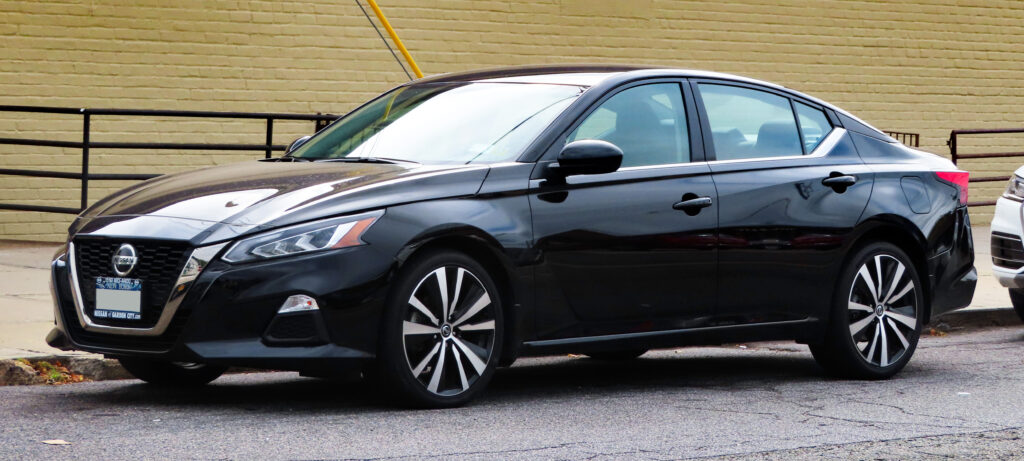
8. **Nissan Altima** The Nissan Altima, a long-standing and popular sedan in the automaker’s lineup, is another vehicle that has frequently appeared on lists of cars ‘owners wish they had never purchased.’ Its widespread appeal and market presence have unfortunately been shadowed by a series of persistent mechanical issues, most notably concerning its transmission, which has significantly impacted owner satisfaction and long-term reliability.
At the heart of many Altima owners’ complaints is the continuously variable transmission (CVT). This particular transmission has been a source of ongoing ‘problematic’ behavior, with its worst issues becoming particularly prominent in model years spanning from 2013 to 2019. Drivers reported a range of frustrating experiences, from unpredictable acceleration and a lack of responsiveness to outright transmission failures that necessitated costly repairs or replacements.
Beyond the pervasive CVT concerns, the Nissan Altima also exhibited problems in other critical areas. Owners frequently complained about issues related to the ‘steering,’ which could manifest as a loose feel, unresponsive handling, or the need for frequent adjustments, detracting from driver confidence and comfort. Such steering problems can make the car feel less secure and less enjoyable to drive, especially on longer journeys.
Furthermore, ‘excessive oil consumption’ was another common grievance, signaling potential underlying engine issues. This problem not only leads to increased maintenance costs due to the need for frequent oil top-offs but can also indicate more serious engine wear or leaks that could compromise the engine’s longevity. Coupled with reports of ‘oil leaks,’ these issues paint a picture of a vehicle that often demanded more attention and expense than its owners anticipated, making it a source of genuine buyer’s remorse.
Continuing our journey through the automotive landscape of regret, we now turn our attention to seven more vehicles that have left a lasting impression of disappointment on their owners. These models, despite their initial appeal or practical promise, have proven to be persistent sources of frustration, underscoring the vital need for meticulous research before committing to a purchase. From underpowered engines to continued transmission woes and fundamental quality issues, these cars stand as stark reminders that a vehicle’s true value extends far beyond its initial sticker price. By dissecting their common pitfalls, we aim to arm you with the insights necessary to navigate the complex world of car buying, ensuring your next choice is one you’ll celebrate, not regret.
Car Model Information: 2023 Nissan Altima 2.5 SL
Name: Nissan Altima
Caption: 2024 Nissan Altima SR (L34; US)
Manufacturer: Nissan
Aka: Nissan Bluebird
Production: 1992–present
Class: Compact car
Predecessor: Nissan Bluebird,Nissan Stanza
ModelYears: 1993–present
Categories: 2000s cars, 2010s cars, 2020s cars, All-wheel-drive vehicles, All Wikipedia articles written in American English
Summary: The Nissan Altima is a mid-size car manufactured by Nissan since 1992. It is a continuation of the Nissan Bluebird line, which began in 1955.
The Altima has historically been larger, more powerful, and more luxurious than the Nissan Sentra but less so than the Nissan Maxima. The first through fourth-generation cars were manufactured exclusively in the United States and officially sold in North and South America, along with the Middle East and Australia. For other markets, Nissan sold a related mid-size sedan called the Nissan Teana which was between the Altima and Maxima in terms of size. In 2013, the Teana became a rebadged version of the fifth-generation Altima.
The name “Altima” was originally applied to a top trim line of the Nissan Leopard for the Japanese market in 1986, and then to the Nissan Laurel Altima mid-size car sold in Central America and the Caribbean before 1992. In 1992, Nissan discontinued the Stanza which was a Nissan Bluebird clone, replacing it with the US-built Altima, while remaining a compact car. The first Altima was produced in June 1992, as a 1993 model. All Altima models for the North American market were built in Smyrna, Tennessee, until June 2004, when Nissan’s Canton, Mississippi plant also began producing the model to meet high demand.
Get more information about: Nissan Altima
Buying a high-performing used car >>>
Brand: Nissan Model: Altima
Price: $23,000 Mileage: 68,229 mi.
Read more about: Steer Clear: 14 Vehicles Notorious for Early Breakdowns Before 50,000 Miles

9. **Nissan Versa Note** The Nissan Versa Note often attracted buyers with its remarkably low price, presenting itself as an accessible small hatchback. However, this affordability frequently came with a significant trade-off in quality, a fact that many owners quickly discovered. The initial savings on the purchase price often failed to compensate for the frustrations that emerged during ownership, leading to a strong sense of buyer’s remorse.
One of the primary sources of exasperation for Nissan Versa Note owners was its continuously variable transmission (CVT). While designed for fuel efficiency, in this particular application, it often proved to be a major liability. Owners frequently reported inconsistent performance and a general lack of refinement, which detracted significantly from the driving experience.
Adding to the vehicle’s list of shortcomings was the anemic acceleration provided by its 1.6-liter 4-cylinder engine. This lack of power made merging onto highways or executing quick maneuvers a less confident and more challenging endeavor. The combination of a frustrating transmission and an underpowered engine made the Versa Note a choice many owners wished they could undo.
Car Model Information: 2024 Chevrolet Silverado 1500 RST
Categories: All set index articles, Articles with short description, CS1 Mexican Spanish-language sources (es-mx), CS1 Portuguese-language sources (pt), CS1 Spanish-language sources (es)
Summary: Nissan Versa is an automobile nameplate used by the Japanese manufacturer Nissan in the Americas for the following models:
According to a Nissan press release in 2008, “versa” is short for “versatile space” meant to imply the spaciousness of the interior and configurable cargo arrangements. The Versa is one of the few remaining subcompact cars left on sale in the North American market, with most automakers dropping small cars from their lineups to focus on crossovers and SUVs.
Get more information about: Nissan Versa
Buying a high-performing used car >>>
Brand: Nissan Model: Versa Note
Price: $46,299 Mileage: 18,181 mi.
Read more about: Consumer Alert: The SUVs Where Repair Bills and Hidden Costs Make Them Not Worth Fixing

10. **Hyundai Veloster** The Hyundai Veloster certainly made a statement with its cool, distinctive styling, unique three-door configuration, and responsive handling, appealing to those looking for something a bit different on the road. Yet, beneath its charismatic exterior lay a host of problems that were, unfortunately, hard for owners to ignore. The initial allure of its design often faded as persistent mechanical issues surfaced.
Among the most alarming problems were the engine issues, which in severe cases could lead to catastrophic failure. Such a critical flaw not only posed a significant safety risk but also resulted in immensely costly repairs, sometimes effectively totaling the vehicle. This fundamental unreliability undermined any pleasure derived from its distinctive aesthetics.
Furthermore, the dual-clutch transmission in the Veloster presented its own set of challenges. Owners frequently reported issues such as delayed acceleration, where the car hesitated to respond to throttle input, as well as slipping gears and jerky shifts. These transmission quirks created an inconsistent and often unpleasant driving experience, particularly in stop-and-go traffic.
As if the engine and transmission problems weren’t enough, the Hyundai Veloster also suffered from suspension and steering issues. These problems could manifest as a less comfortable ride, poor handling dynamics, or a general feeling of looseness in the steering. Collectively, these mechanical grievances turned what appeared to be a fun, sporty car into a vehicle that demanded constant attention and repair, leaving owners deeply regretting their choice.
Car Model Information: 2013 Hyundai Veloster Turbo
Name: Hyundai Veloster
Manufacturer: Hyundai Motor Company
Production: 2011–2022
Class: Sport compact car
Layout: Front-engine, front-wheel-drive layout
BodyStyle: hatchback
Predecessor: Hyundai Tiburon
ModelYears: 2012–2022
Assembly: Ulsan
Categories: All Wikipedia articles in need of updating, All articles with unsourced statements, Articles containing Korean-language text, Articles with short description, Articles with unsourced statements from May 2018
Summary: The Hyundai Veloster is a compact car first produced in 2011 by Hyundai, with sales beginning in South Korea on March 10, 2011, and in Canada and the United States since the fall of 2011. In South Korea, it was marketed under Hyundai’s ‘Premium Youth Lab’. It was unveiled on January 10, 2011, at the Detroit Auto Show, and fills the void left when Hyundai discontinued the Hyundai Tiburon after the 2008 model year. The car differs from most other hatchbacks with its asymmetrical door configuration, featuring one large door on the driver side and two smaller doors on the passenger side. This configuration is more common on commercial vehicles and minivans.
Get more information about: Hyundai Veloster
Buying a high-performing used car >>>
Brand: Hyundai Model: Veloster
Price: $10,000 Mileage: 56,000 mi.
Read more about: Oops! Drivers Confess the 9 Cars They’d Totally “Unpurchase” If They Could Hit Rewind on the Highway
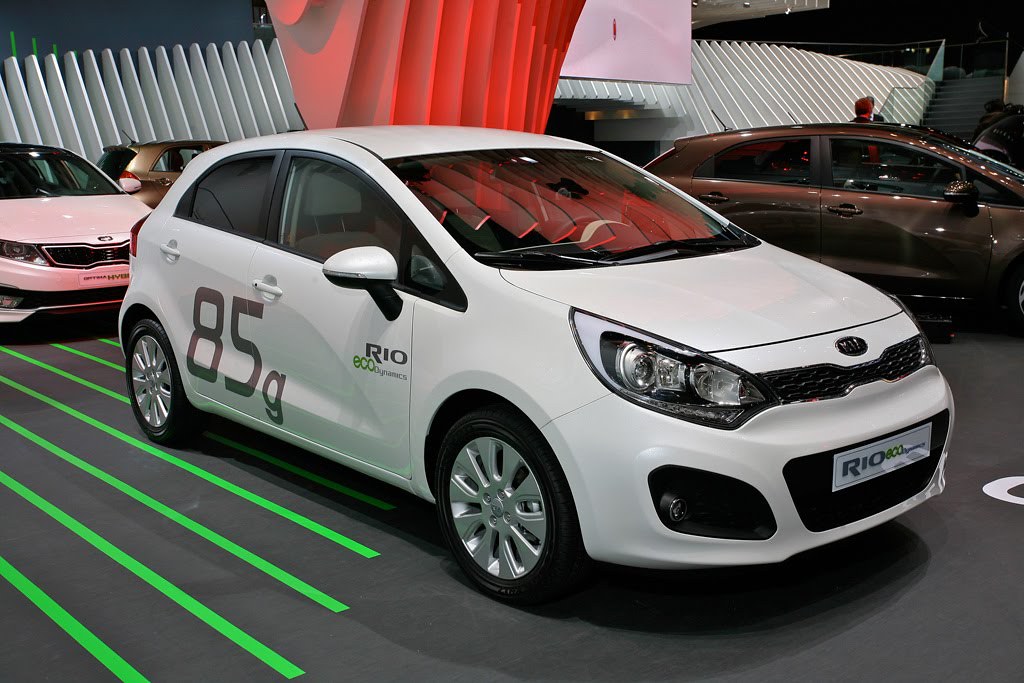
11. **Kia Rio** The Kia Rio, often lauded for its affordability and commendable fuel efficiency, has unfortunately also earned a reputation for being a source of buyer’s remorse for many of its owners. While these positive attributes initially draw consumers in, the long-term ownership experience often presents a different, less appealing picture, leading to a profound sense of dissatisfaction.
One of the most frequently cited concerns among Kia Rio owners revolves around persistent engine issues. These problems often manifest as rough idling, where the engine vibrates unevenly at a standstill, and misfires, which can cause a noticeable loss of power and efficiency. Such issues are typically traced back to problems with critical components like the spark plugs or ignition coils.
Beyond the mechanical troubles, owners also voiced significant complaints regarding the vehicle’s interior quality. Many found the materials used to be cheap and lacking in durability, which quickly detracted from the cabin experience. Coupled with comfort issues, the overall impression was of a vehicle that cut too many corners, making the Kia Rio a car that many owners ultimately wished they had never purchased.
Car Model Information: 2023 Kia Rio S
Name: Kia Rio
Caption: Fourth generation Kia Rio
Manufacturer: Kia
Aka: Kia Pride (2005–2017),Kia K2 (China; 2011–2020)
Production: November 1999 – December 2023
ModelYears: 2001–2023 (North America)
BodyStyle: hatchback
Class: Subcompact car
Layout: Front-engine, front-wheel-drive layout
Predecessor: Kia Pride,Kia Avella
Successor: Kia K3 (BL7)
Categories: 2000s cars, 2010s cars, Articles containing Korean-language text, Articles with short description, CS1 Croatian-language sources (hr)
Summary: The Kia Rio (Korean: 기아 리오) is a subcompact car manufactured by Kia from 1999 to 2023. Body styles have included a three and five-door hatchback and four-door sedan, equipped with inline-four gasoline and diesel engines, and front-wheel drive.
The Rio replaced the first generation Pride—a rebadged version of the Ford Festiva—and the Avella, a subcompact sold as a Ford in some markets. A second generation was introduced in 2005 in Europe and in 2006 in North America, sharing its platform with the Hyundai Accent, a subcompact manufactured by its sister Hyundai Motor Company in South Korea.
In August 2023, the K3 was introduced as its successor in several markets such as Mexico and the GCC countries.
Get more information about: Kia Rio
Buying a high-performing used car >>>
Brand: Kia Model: Rio
Price: $16,949 Mileage: 22,509 mi.
Read more about: Steer Clear: 14 Vehicles Notorious for Early Breakdowns Before 50,000 Miles
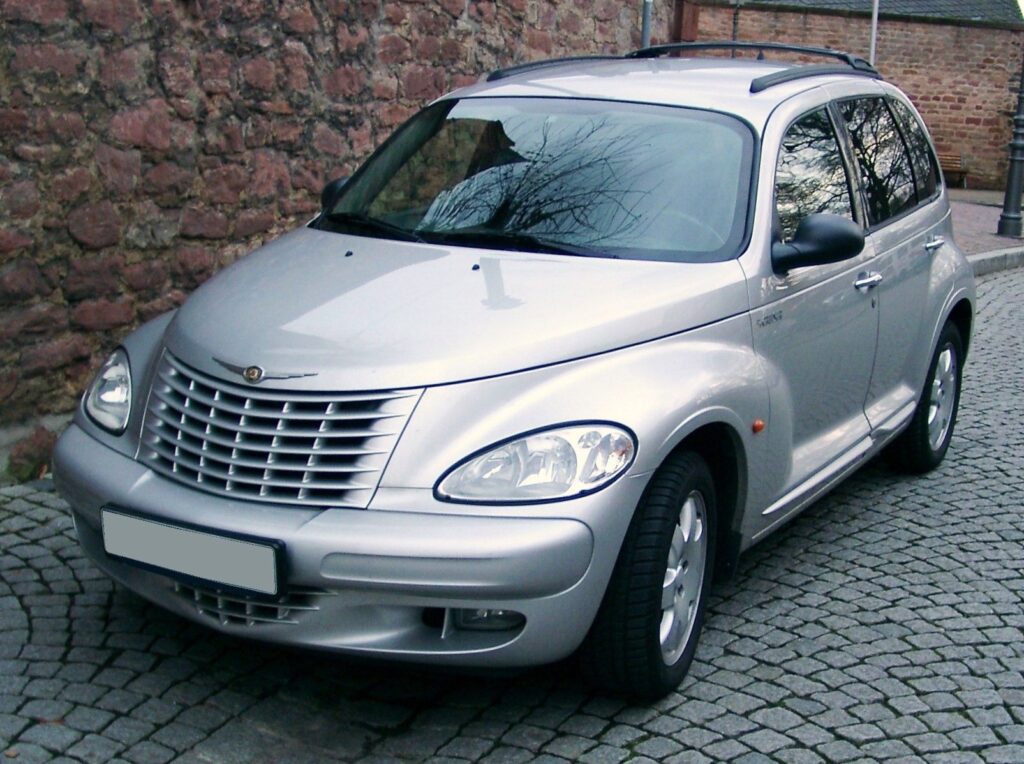
12. **Chrysler PT Cruiser** When it comes to the Chrysler PT Cruiser, one often wonders where to begin detailing its complexities. This compact car, with its distinctive retro style, has always divided opinions, often inspiring either fervent love or a strong sense of disdain—or perhaps, a peculiar blend of both. However, its polarizing aesthetics were far from the only issues that plagued this vehicle, as mechanical woes were equally, if not more, prevalent.
Underneath its unique facade, the PT Cruiser was notorious for having engine issues galore. Owners frequently reported a range of severe problems, including sudden stalling, which could be dangerous and inconvenient, as well as persistent rough idling. Overheating was another common grievance, often leading to more serious internal damage, with head gasket failure being a particularly common and costly repair.
Compounding these extensive engine problems, the Chrysler PT Cruiser also suffered from significant transmission and electrical issues. These malfunctions could range from minor annoyances to critical failures, impacting drivability and reliability. The cumulative effect of these widespread mechanical and electrical faults left many owners profoundly regretting their decision to buy, turning what might have been a stylistic statement into a constant headache.
Car Model Information: 2024 Chevrolet Silverado 1500 RST
Name: Chrysler PT Cruiser
Manufacturer: Chrysler
ModelCode: PT,PG
Production: 2000–2010
ModelYears: 2001–2010
Assembly: Toluca, Mexico State
Designer: Bryan Nesbitt
Class: Compact car
BodyStyle: convertible
Platform: Chrysler PT platform
Related: Dodge SRT4,Dodge Neon
Predecessor: Dodge Neon
Successor: Lancia Delta#Third generation
Layout: Front-engine, front-wheel-drive layout
Engine: ubl
Transmission: Ultradrive#40TE
Wheelbase: 103 in
Abbr: on
Length: 168.8 in
Width: 67.1 in
Height: 63 in
Weight: 3123 lb
Categories: 2010s cars, All articles with unsourced statements, Articles with short description, Articles with unsourced statements from March 2018, Cars discontinued in 2010
Summary: The Chrysler PT Cruiser is a compact car that was built by the American company Chrysler from 2001 until 2010. Introduced as a five-door hatchback wagon, a two-door convertible variant was also made from 2005 until 2008.
Originally planned as a Plymouth model, the PT Cruiser was ultimately marketed as a Chrysler when Plymouth was discontinued. Intended to invoke 1930s aesthetics, the exterior of the PT Cruiser was designed by Bryan Nesbitt. The model received an intermediate facelift for the 2006 model year. Interior packaging was noted for its high roof, high h-point seating, and flexible cargo and passenger configurations enabled by a multi-level rear cargo shelf and rear seats a user could fold, tumble, or remove.
The PT Cruiser was produced in Mexico and Austria at the Toluca Car Assembly and Eurostar Automobilwerk factories respectively. By the end of production in July 2010, worldwide production had reached 1.35 million.
In its nameplate, PT stands for “Personal Transport” or “Personal Transportation”. PT was the PT Cruiser’s product code for the Mexican-made units.
Get more information about: Chrysler PT Cruiser
Buying a high-performing used car >>>
Brand: Chrysler Model: PT Cruiser
Price: $46,299 Mileage: 18,181 mi.
Read more about: Fuel for Regret: 14 Overhyped Vehicles That Drove Straight to Disappointment
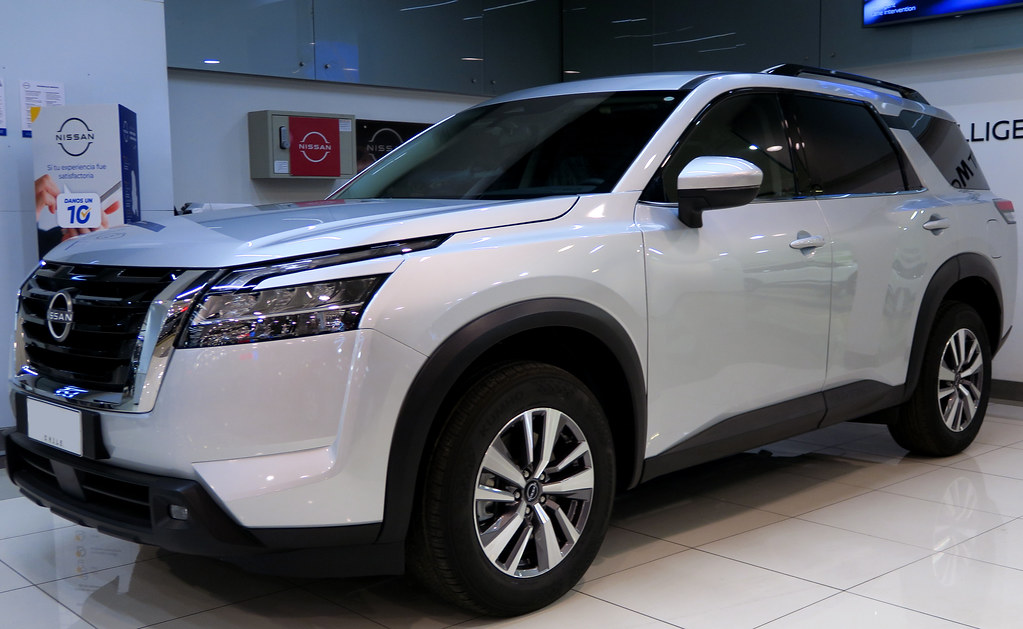
13. **Nissan Pathfinder** The Nissan Pathfinder, despite its popularity as an SUV, has a history marred by problems that have consistently left owners regretting their purchasing decisions. While it might appear to be a robust family vehicle at first glance, its long-term reliability has often fallen short of expectations, leading to widespread dissatisfaction.
A significant point of contention for many Pathfinder owners is, once again, the continuously variable transmission (CVT). This particular transmission has been a recurring issue across various Nissan models, and the Pathfinder is no exception. Owners frequently experienced issues such as rough shifting, unsettling shuddering during acceleration, and even overheating, which can severely compromise the transmission’s lifespan and performance.
In some of the most frustrating cases, these CVT problems escalated to the point where owners had no option but to replace the entire transmission, incurring substantial and unexpected costs. Beyond the pervasive transmission woes, the Pathfinder also suffered from engine issues and fuel system problems, adding to the list of frustrations and solidifying its reputation as a vehicle best approached with extreme caution.
Car Model Information: 2023 Nissan Pathfinder SL
Name: Nissan Pathfinder
Caption: 2022 Nissan Pathfinder Platinum 4WD (R53, US)
Manufacturer: Nissan
Production: 1985–present
ModelYears: unbulleted list
Layout: unbulleted list
Class: unbulleted list
Chassis: unbulleted list
Predecessor: unbulleted list
Successor: unbulleted list
Categories: 1990s cars, 2000s cars, 2010s cars, 2020s cars, All-wheel-drive vehicles
Summary: The Nissan Pathfinder is a range of sport utility vehicles manufactured by Nissan since 1985. Until the third-generation model, the Pathfinder is based on Nissan’s compact pickup truck platform which it shares with the Navara/Frontier.
The Pathfinder was marketed as the Nissan Terrano (Japanese: 日産・テラノ, Hepburn: Nissan Terano) outside North America. Beginning in 2004, the vehicles were marketed globally as the Pathfinder.
In 2012, the R52 series Pathfinder was released as a three-row crossover SUV based on the unibody Nissan D platform, moving away from the body-on-frame chassis format. The role of a mid-size body-on-frame SUV in Nissan’s global lineup was passed to the Terra/X-Terra, which was released in 2018 and based on the D23 series Navara.
Get more information about: Nissan Pathfinder
Buying a high-performing used car >>>
Brand: Nissan Model: Pathfinder
Price: $33,900 Mileage: 18,055 mi.
Read more about: Consumer Alert: The SUVs Where Repair Bills and Hidden Costs Make Them Not Worth Fixing
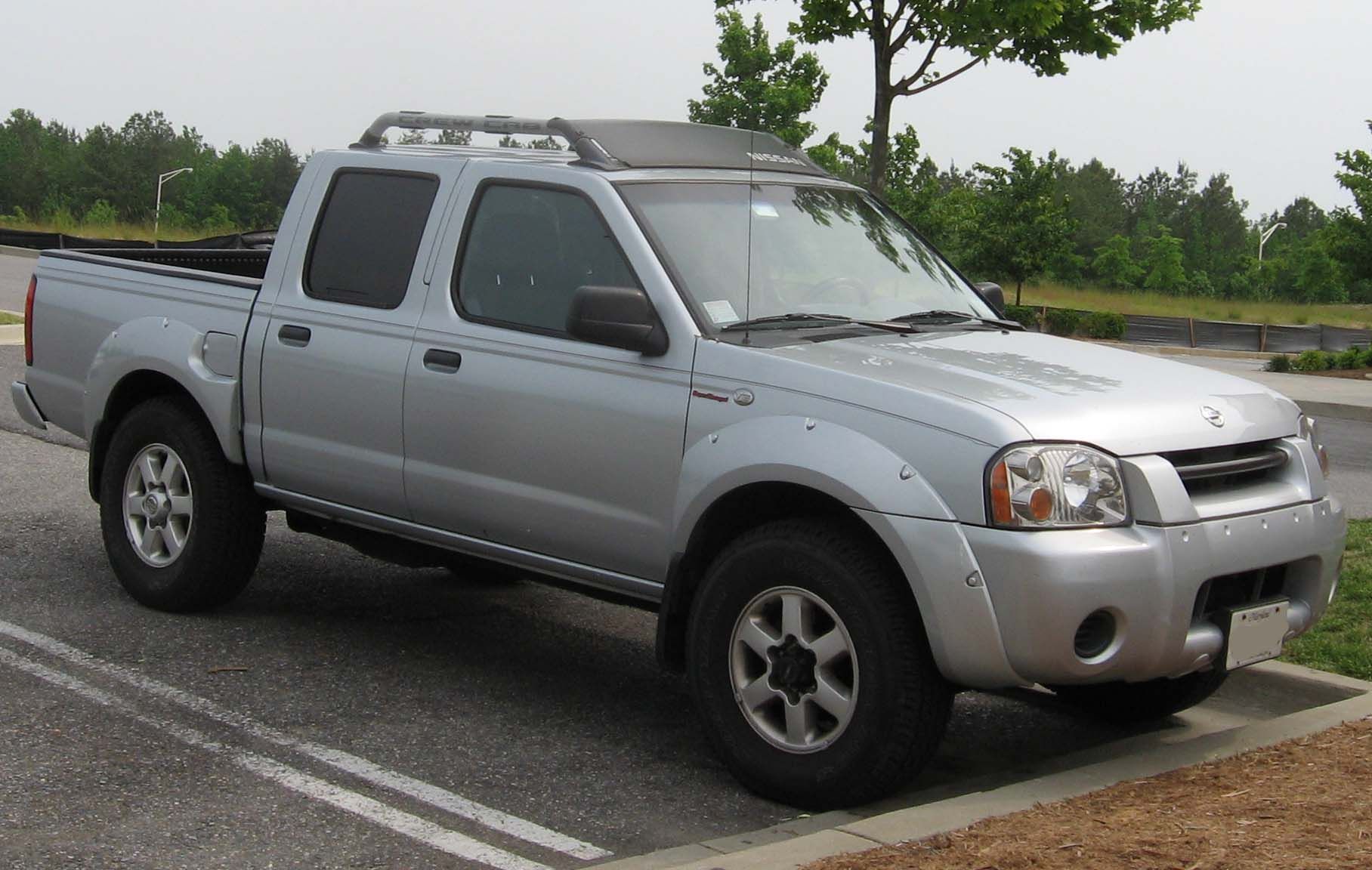
14. **Nissan Frontier** As a mid-size pickup truck, the Nissan Frontier is expected to be a rugged and dependable workhorse. Unfortunately, numerous problems across various model years have left many owners shaking their heads and expressing profound regret over their purchase. For those seeking reliability in a truck, certain Frontiers proved to be a costly disappointment.
The 2005 to 2010 model years are particularly notorious for severe transmission issues. A design flaw allowed the radiator to leak coolant directly into the transmissions, a catastrophic problem that severely compromised the unit’s integrity. This defect led to a cascade of problems, transforming the ownership experience into a constant battle against mechanical failure.
The consequences of this coolant contamination were dire: owners reported frequent instances of slipping gears, an unsettling feeling of herky-jerky shifting, and ultimately, complete transmission failure. Such critical mechanical breakdowns are not only incredibly inconvenient but also demand expensive and often recurring repairs. Adding to these significant transmission woes were persistent engine and timing chain issues, further eroding owner confidence and making the Nissan Frontier from these years a truck many wished they had avoided.
Car Model Information: 2016 Nissan Frontier SV
Categories: All set index articles, Articles with short description, Nissan vehicles, Set index articles on cars, Short description is different from Wikidata
Summary: The Nissan Frontier is a nameplate used on three different pickup truck models by Nissan:
Nissan Frontier (international), an alternative nameplate for the NP300/Navara on some markets
Nissan Frontier (North America), a rebadged NP300/Navara from 1997 to 2021, then became a separate model since 2021
Nissan Frontier Pro, a rebadged Dongfeng Z9 PHEV that will be available from 2025.
Get more information about: Nissan Frontier
Buying a high-performing used car >>>
Brand: Nissan Model: Frontier
Price: $16,949 Mileage: 115,564 mi.
Read more about: Unpacking the Unreliable: A Deep Dive into the 10 Least Dependable Car Models of 2025

15. **Chrysler Pacifica Hybrid** The Chrysler Pacifica Hybrid, while a popular choice in the minivan segment, has also earned a reputation as a problematic vehicle despite its modern appeal. Its plug-in hybrid powertrain is touted for its fuel efficiency, offering an enticing blend of family utility and eco-consciousness. However, the critical question arises: is this fuel efficiency sufficient to offset the array of battery and electrical problems that have plagued its owners?
According to many owners, the answer is a resounding ‘No.’ A significant source of frustration has been battery drain issues, which undermine the vehicle’s hybrid promise by reducing its practicality. Inconsistent all-electric range further disappoints, as the vehicle often fails to deliver on its advertised capabilities for electric-only driving. In more severe instances, owners have faced complete battery failure, leading to costly and complex repairs.
Beyond the primary battery and electrical concerns, other issues contribute to owner dissatisfaction, including problems with the electric continuous variable transmission. These mechanical and electrical shortcomings create a cumulative effect, leaving many owners questioning the overall value and reliability of their investment. The list of grievances, it seems, simply goes on, making the Pacifica Hybrid a compelling case for careful consideration before purchase.
Car Model Information: 2024 Chevrolet Silverado 1500 RST
Name: Chrysler Pacifica (RU)
Manufacturer: Chrysler (automotive brand)
Aka: Chrysler Voyager,Chrysler Grand Caravan (Canada, 2021–present)
Production: 2016–present
ModelYears: 2017–present
Assembly: Windsor, Ontario
Designer: Irina Zavatski,Winnie Cheung (interior)
Class: Minivan
BodyStyle: 5-door minivan
Layout: Front-engine, front-wheel drive,Front-engine, all-wheel drive
Platform: Compact U.S. Wide platform
Related: Chrysler 200#Second generation (2014–)
Engine: Chrysler Pentastar engine#3.6L,FCA Global Medium Engine
Motor: 2x electric motors (SiEVT main motor & motor generator; PHEV)
Transmission: ZF 9HP transmission,automatic transmission,Continuously variable transmission
Drivetrain: PHEV
ElectricRange: cvt
Battery: val,lithium-ion battery
Wheelbase: 3089 mm
Abbr: on
Order: flip (hybrid)
Length: 203.6 in
Width: 79.6 in
Height: convert
Weight: {{convert,1964,kg,lb,abbr=on,order=flip
Predecessor: Chrysler minivans (RT)
Categories: 2010s cars, All-wheel-drive vehicles, Articles with short description, CS1 Spanish-language sources (es), Cars introduced in 2016
Summary: The Chrysler Pacifica is a minivan produced by the Chrysler division of Stellantis since the 2017 model year. Replacing the Chrysler Town & Country, the Pacifica is the sixth generation of Chrysler minivans, taking its name from the 2004–2008 product line. Along with serving as the first minivan with a plug-in hybrid drivetrain, the Pacifica has also served as a platform for autonomous vehicle development.
For the 2020 model year, Chrysler repackaged the lower-trim versions of the Pacifica as a revived Chrysler Voyager, largely to expand fleet sales of the model line; following the retirement of the Dodge Grand Caravan, the Chrysler Voyager was introduced in Canada for 2021 as the Chrysler Grand Caravan (moving the nameplate from Dodge to Chrysler after 36 years). Following the retirement of the Chrysler 300 sedan, the Pacifica/Voyager/Grand Caravan is currently the only vehicle marketed by Chrysler.
Chrysler has assembled the Pacifica minivan (and the Voyager/Grand Caravan) in its Windsor Assembly facility in Ontario (home to Chrysler minivan assembly since 1983).
Get more information about: Chrysler Pacifica (minivan)
Buying a high-performing used car >>>
Brand: Chrysler Model: Pacifica Hybrid
Price: $46,299 Mileage: 18,181 mi.
Read more about: A Consumer’s Guide to Minivan Reliability – Uncovering Long-Lasting Performers and Frequent Repair Pitfalls After 100,000 Miles
In the journey of car ownership, the road can sometimes be unexpectedly bumpy, leading many drivers to a crossroads of regret. The 15 vehicles we’ve explored serve as a collective cautionary tale, illuminating the real-world consequences of purchases that fall short of expectations. They underscore that while a vehicle might impress on the showroom floor, its true character emerges over years of daily use, revealing strengths and weaknesses that can significantly impact your wallet and peace of mind. Learning from these experiences is not just about avoiding specific models; it’s about cultivating a more informed, critical approach to car buying. By prioritizing reliability, owner satisfaction, and long-term value over superficial appeal, you can steer clear of buyer’s remorse and drive away with confidence, making a choice that brings lasting contentment rather than lingering disappointment.

